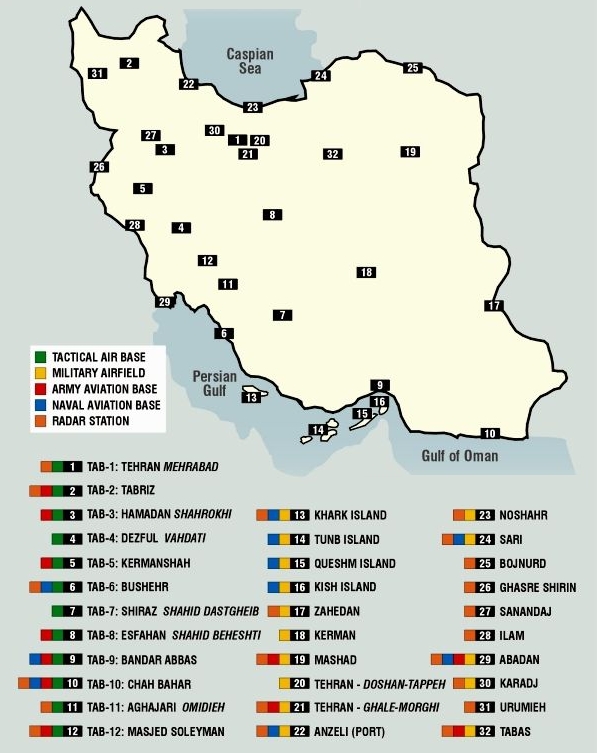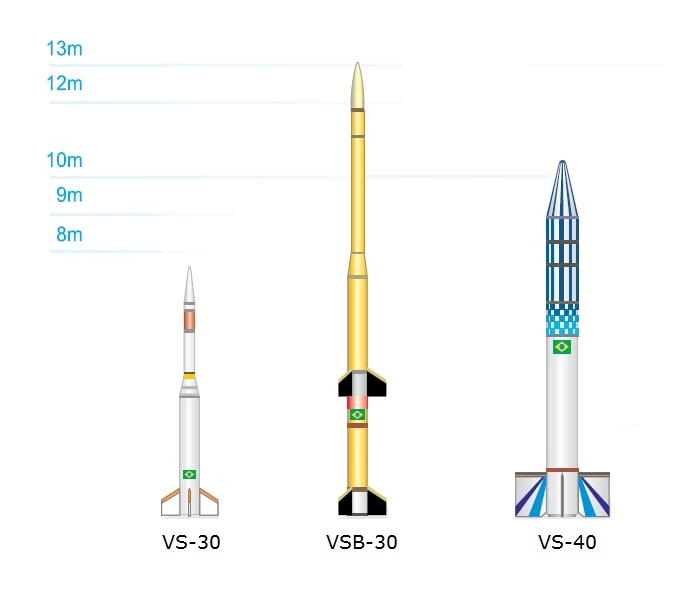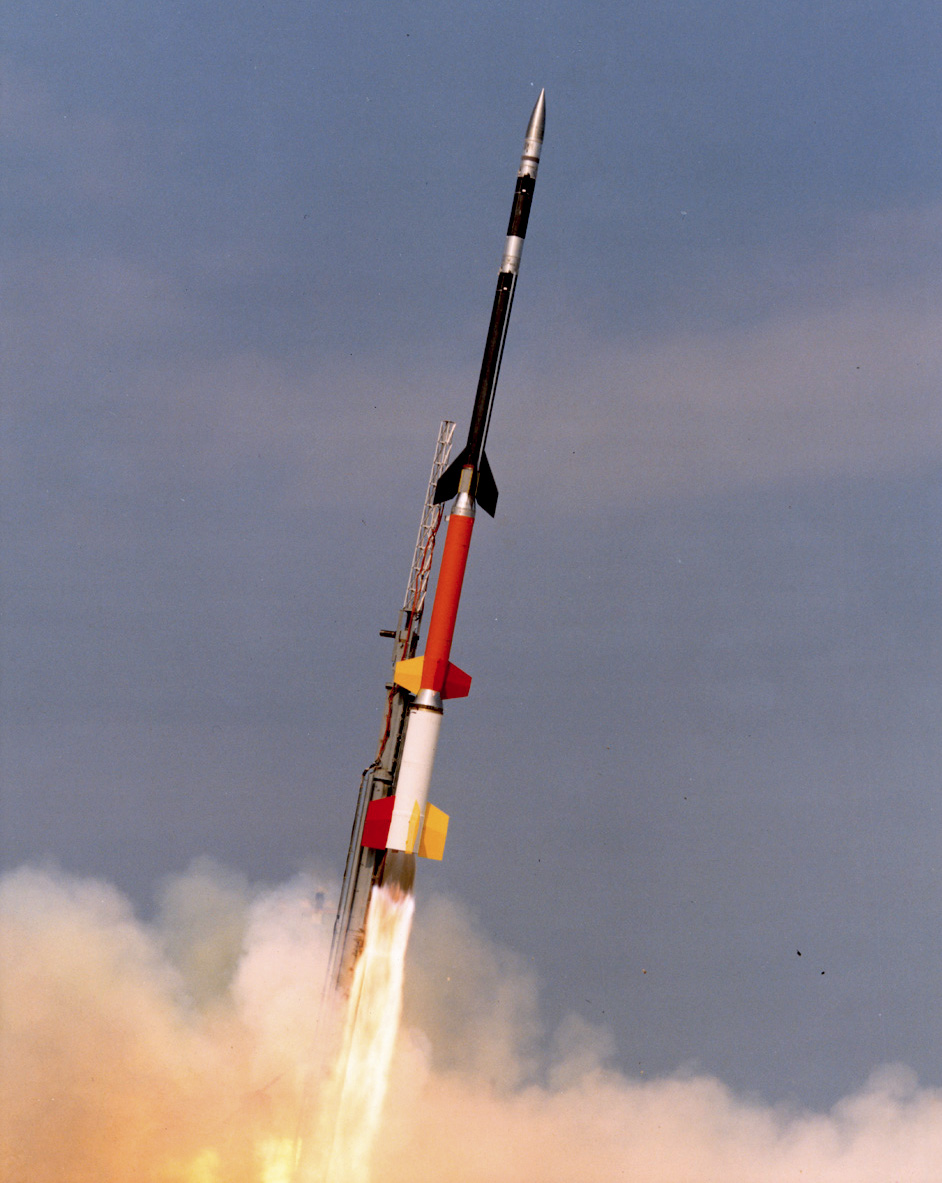|
Centro De Lançamento De Barreira Do Inferno
The Barreira do Inferno Launch Center (, ) is a rocket launch base of the Brazilian Space Agency. It was created in 1965, and is located near Ponta Negra beach, near Natal, the capital of the state of Rio Grande do Norte. It has been used for 233 launches from 1965 to 2007, reaching up to 1100 kilometers in altitude. It provides tracking support for launches from the Alcântara Launch Center and Guiana Space Centre. Launches The following rockets have been launched from CLBI: * Loki-Dart *Nike-Cajun *Orion *Nike-Apache * Aerobee 150 *Javelin * Nike-Tomahawk * Black Brant 4A *Nike-Iroquois *Boosted Dart * Super Arcas *Rocketsonde * Black Brant 5C * Black Brant 4B *Paiute Tomahawk *PESL *Castor Lance * Black Brant 8B *Sonda 3 * Skylark 12 *Cuckoo 4 *Nike Orion *Sonda 4 * VLS-R1 *VS-30 Gallery File:Foguete Barreira do Inferno.jpg, Rocket display at Barreira do Inferno File:Air Defence Museum, Barreira do Inferno (8227091948).jpg, Air Defence Museum, Barreira do Inferno File:Ai ... [...More Info...] [...Related Items...] OR: [Wikipedia] [Google] [Baidu] |
Military Base
A military base is a facility directly owned and operated by or for the military or one of its branches that shelters military equipment and personnel, and facilitates training and operations. A military base always provides accommodations for one or more units, but it may also be used as a command center, training ground or proving ground. In most cases, military bases rely on outside help to operate. However, certain complex bases are able to endure on their own for long periods because they are able to provide food, drinking water, and other necessities for their inhabitants while under siege. Bases for military aviation are called air bases. Bases for military ships are called naval bases. Jurisdictional definition Military bases within the United States are considered federal property and are subject to federal law. Civilians (such as family members of military officers) living on military bases are generally subject to the civil and criminal laws of the stat ... [...More Info...] [...Related Items...] OR: [Wikipedia] [Google] [Baidu] |
Argo D-4 Javelin
Javelin (Argo D-4) was the designation of an American sounding rocket. The four stage Javelin rocket had a payload of around 125 pounds (57 kg), an apogee of 1100 kilometers, a liftoff thrust of 365 kilonewton The newton (symbol: N) is the unit of force in the International System of Units (SI). Expressed in terms of SI base units, it is 1 kg⋅m/s2, the force that accelerates a mass of one kilogram at one metre per second squared. The unit i ...s (82,100 lbf), a total mass of 3,385 kilograms (7,463 lb), and a core diameter of 580 millimeters (22.8 in). It was launched 82 times between 1959 and 1976. This vehicle consisted of an Honest John first stage plus two Nike Ajax stages plus a X-248 stage. First NASA use in 1959. Could lift 45 kg (100 lb) to 800 km (500 mi). It was launched 85 times between 1959 and 1976. References External links * https://web.archive.org/web/20050212234911/http://astronautix.com/lvs/javelin.htm * htt ... [...More Info...] [...Related Items...] OR: [Wikipedia] [Google] [Baidu] |
Spaceports
A spaceport or cosmodrome is a site for launching or receiving spacecraft, by analogy to a seaport for ships or an airport for aircraft. The word ''spaceport''—and even more so ''cosmodrome''—has traditionally referred to sites capable of launching spacecraft into Earth's orbit, Earth orbit or on interplanetary trajectories. However, rocket launch sites for Sub-orbital spaceflight, sub-orbital Sub-orbital spaceflight, spaceflights are also sometimes called spaceports, especially as new and proposed facilities for suborbital commercial spaceflight are often branded as "spaceports." Space station, Space stations and proposed future lunar bases are also sometimes referred to as spaceports, particularly when envisioned as nodes for further interplanetary travel. Spaceports are evolving beyond traditional government-run complexes into multi-functional aerospace hubs, increasingly driven by private companies such as SpaceX, Blue Origin, and Virgin Galactic. A prominent example i ... [...More Info...] [...Related Items...] OR: [Wikipedia] [Google] [Baidu] |
VS-30
The VS-30 is a Brazilian sounding rocket, developed by the ''Instituto de Aeronáutica e Espaço'' and derived from the Sonda 3 sounding rocket first stage.Encyclopedia Astronautica - VS-30 It consists of a single, solid-fuelled stage, and has been launched from Alcântara, and Barreira do Inferno, |
VLS-1
The ''VLS-1'' () was the Brazilian Space Agency's main satellite launch vehicle. The launch vehicle would have been capable of launching satellites into orbit. The launch site was located at the Alcântara Launch Center due to its proximity to the equator. Associated vehicles include the Sonda (rocket)#Sonda I, Sonda I, Sonda (rocket)#Sonda II, Sonda II, Sonda (rocket)#Sonda III, Sonda III and Sonda (rocket)#Sonda IV, Sonda IV, the VS-30, VS-40 and VSB-30. The VLS was cancelled after decades of development and high expenditures with poor results and a failed association with Ukraine that slowed the program for years. History VLS-1 development started in 1984, after the first launch of the Sonda IV rocket. To date, three prototypes have been built and two launches attempted, departing from the Alcântara Launch Center. During the V1 and V2 prototype launches (VLS-1 V1 and VLS-1 V2) technical problems prevented mission success, but allowed the testing of several vehicle components ... [...More Info...] [...Related Items...] OR: [Wikipedia] [Google] [Baidu] |
Sonda 4
Sonda ("Probe" in English) is a family of Brazilian-built sounding rockets which serves as an Research and development, R&D path to the VLS-1, VLS () Orbital spaceflight, orbital rocket. Launches started in 1965 and continue to this day. Launch sites include Wallops Island, Andoya Rocket Range, Andoya, Esrange, Kiruna, Barreira do Inferno Launch Center, Natal, Alcântara Space Center, Alcântara, Praia do Cassino, Cassino and Svalbard Rocket Range, SvalRak. Sonda I The Sonda I is a two Multistage rocket, stage rocket (S10-1 & S-10-2 rocket stages) with a maximum flight altitude of 65 km, a liftoff thrust of 27 kN a total mass of 100 kg, a diameter of 11 cm and a length of 4.5 metres. It was launched 9 times between 1965 and 1966. File:Sonda I dimensions (rotated).jpg, link=, Diagram with Sonda I rocket dimensions File:Sonda I-01.jpg, link=, Sonda I on display File:At Memorial Aeroespacial Brasileiro 2019 065.jpg, link=, Sonda 1 (right) at Memorial Aeroespacia ... [...More Info...] [...Related Items...] OR: [Wikipedia] [Google] [Baidu] |
Nike Orion
The Nike stage or Nike booster, a solid fuel rocket motor, was developed by Hercules Aerospace for use as the first stage of the Nike Ajax (M5 motor) and Nike Hercules (M5E1 and M88 motor) missiles as part of Project Nike. It was subsequently employed in a variety of missiles and multi-stage sounding rockets, becoming one of the most popular and reliable rocket stages, not only in the United States, but also in several other countries around the world. Sounding rockets based on Nike Booster *The Nike Deacon has a ceiling of 189 km, a takeoff thrust of 217 kN, a takeoff weight of 710 kg, a diameter of 0.42 m and a length of 7.74 m. * The Nike Javelin was launched 34 times between 1964 and 1978. The maximum flight altitude of the Nike Javelin was 130 km, the takeoff thrust 217 kN, takeoff weight 900 kg, 0.42 m and length 8.20 m. * The Nike Malemute consists of a Nike starting stage and a Malemute upper stage. It has a ceiling of , a ... [...More Info...] [...Related Items...] OR: [Wikipedia] [Google] [Baidu] |
Skylark (rocket)
Skylark was a family of British sounding rockets. It was operational between 1957 and 2005. Development of the Skylark begun during the early 1950s at the Royal Aircraft Establishment (RAE), which approached the Royal Society with an offer for it to carry scientific experiments. During early 1955, the British government agreed to provide £100,000 to support the programme's operations for four years. Development of the Skylark, initially known as the ''CTV.5 Series 3'', was pursued at a rapid pace, with hopes that initial launches could take place during the latter half of 1956. On 7 April 1956, the existence of the Skylark rocket was publicly revealed under the early name of ''Gassiot vehicle''. Launch facilities were established at the existing Woomera missile range in Australia; the Skylarks were produced in Britain and flown to Australia for final assembly, testing, and launching. The Skylark was first launched on 13 February 1957; the first scientific mission occurred d ... [...More Info...] [...Related Items...] OR: [Wikipedia] [Google] [Baidu] |
Sonda 3
Sonda ("Probe" in English) is a family of Brazilian-built sounding rockets which serves as an R&D path to the VLS () orbital rocket. Launches started in 1965 and continue to this day. Launch sites include Wallops Island, Andoya, Kiruna, Natal, Alcântara, Cassino Cassino () is a ''comune'' in the province of Frosinone at the southern end of the region of Lazio. It's the last city of the Valle Latina, Latin Valley. It is located at the foot of Monte Cairo near the confluence of the Gari (river), Gari and ... and SvalRak. Sonda I The Sonda I is a two stage rocket (S10-1 & S-10-2 rocket stages) with a maximum flight altitude of 65 km, a liftoff thrust of 27 kN a total mass of 100 kg, a diameter of 11 cm and a length of 4.5 metres. It was launched 9 times between 1965 and 1966. File:Sonda I dimensions (rotated).jpg, link=, Diagram with Sonda I rocket dimensions File:Sonda I-01.jpg, link=, Sonda I on display File:At Memorial Aeroespacial Brasileiro 20 ... [...More Info...] [...Related Items...] OR: [Wikipedia] [Google] [Baidu] |
Rocketsonde
A sounding rocket or rocketsonde, sometimes called a research rocket or a suborbital rocket, is an instrument-carrying rocket designed to take measurements and perform scientific experiments during its sub-orbital flight. The rockets are often used to launch instruments from above the surface of the Earth, the altitude generally between weather balloons and satellites; the maximum altitude for balloons is about and the minimum for satellites is approximately . Due to their suborbital flight profile, sounding rockets are often much simpler than their counterparts built for orbital flight. Certain sounding rockets have an apogee between , such as the Black Brant X and XII, which is the maximum apogee of their class. For certain purposes, sounding rockets may be flown to altitudes as high as to allow observing times of around 40 minutes to provide geophysical observations of the magnetosphere, ionosphere, thermosphere, and mesosphere. Etymology The origin of the term comes fr ... [...More Info...] [...Related Items...] OR: [Wikipedia] [Google] [Baidu] |
ARCAS
In Greek mythology, Arcas (; Ancient Greek: Ἀρκάς) was a hunter who became king of Arcadia. He was remembered for having taught people the arts of weaving and baking bread and for spreading agriculture to Arcadia. Family Arcas was the son of Zeus and Callisto. In other accounts, his birth mother was called Megisto, daughter of Ceteus, son of Lycaon, or else Themisto, daughter of Inachus. Arcas was married to either Laodamia ( Leaneira), daughter of Amyclas of Sparta; Meganeira, daughter of Crocon; the nymph Chrysopeleia; or the Dryad Erato. He also left a number of children, including the sons Azan, Apheidas, Elatus, and Triphylus, an illegitimate son Autolaus and at least two daughters, Hyperippe and Diomeneia. Arcas's other sons were Erymanthus and Pelasgus. Mythology Callisto was a nymph in the retinue of the goddess Artemis, or in some sources the daughter of King Lycaon. As she would not be with anyone but Artemis, Zeus cunningly disguise ... [...More Info...] [...Related Items...] OR: [Wikipedia] [Google] [Baidu] |
Boosted Dart
Boosted Dart is a United States single stage sounding rocket of the Loki family. Between 1966 and 1968, 39 of these rockets were launched by NASA. The Boosted Dart has a length of 3.30 meters, a diameter of 0.1 meters and a maximum flight altitude of 75 kilometers The kilometre ( SI symbol: km; or ), spelt kilometer in American and Philippine English, is a unit of length in the International System of Units (SI), equal to one thousand metres (kilo- being the SI prefix for ). It is the preferred measu .... References External links Sounding rockets of the United States {{rocket-stub ... [...More Info...] [...Related Items...] OR: [Wikipedia] [Google] [Baidu] |




